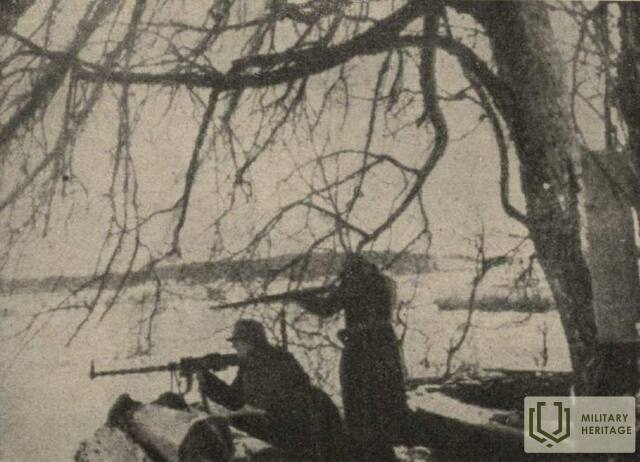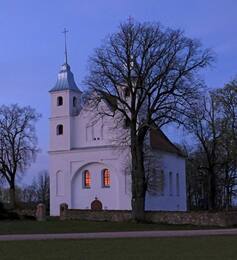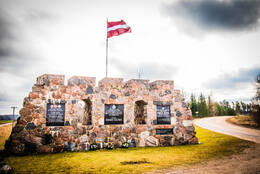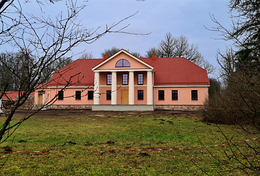Memories of Captain Alexander Leving on the reconnaissance of the Venta near Lena
In February 1919, both sides of the Venta River were active in reconnaissance activities. Captain Alexander Loeving, Chief of the Cavalry Division, was one of the commanders of the reconnaissance raids.
Another unforgettable reconnaissance march was on February 12. In the early morning we went out with 8 riders to Slow. Leaving the horses at the guard unit, we walked across the Venta to the other bank, and we started moving north under the cover of a cliff. We passed Pikuļi, which was known to have a red wire. Then we turn to Birznieki. There was a noticeable movement near these houses and some carts were visible. Uzdevu ltn. (later colonel) Let's go there with some riders. I myself and the others returned to Venta on our shore, taking a position at the edge of the forest near Kurmä, so that I could feed with fire. Drop the group and cover its departure. Our scouts soon noticed our scouts and wanted to return them. We opened fire, causing a great deal of confusion on the part of the opponent. Well it was high time for our group to leave. I was afraid that only it would not end up in the river when I left quickly, because there were no layers of ice in many places. Devos ar vltn. Branch back across the river, marking the transition point with needles. We then slipped through the coastal bushes to see where our group was staying. The fire from the edge of the Kurmu forest was still going on. Suddenly we saw only a swarm of red in about 100 meters, which ran out of the nearby forest. We started shooting as far as we could, standing upright to influence the opponent morally as well. The collision ended with the hastily retreat of the Bolsheviks from Birznieki. We all returned healthy and healthy, both in one sweat. We went to Lena with songs, where we sat on horses to go to Rudbārži with a message to the colonel.
Krīpēns A., Kalpaka Battalion and Balozs Brigade, Belimora, 1963.
Related timeline
Related objects
Holy Trinity Roman Catholic Church in Lēni
The church is located in the village of Lēnu, Nīkrāce parish, Skrunda municipality, on the Skrunda - Embute road.
The Venta River is located near the church, the banks of which were guarded by soldiers of the 1st Separate Latvian Battalion in February 1919. As the battalion's numbers did not allow for a continuous front line, the front was guarded by sentry posts. One of them was also located on the bank of the river near the church. The church towers were useful for surveillance of the surrounding area and the other side of the river.
Memorial to the 1st Latvian Separate Battalion in Lėnai and relocation site on the Venta
The monument is located in Lēņi, at a road crossroads near Lēņi Manor.
The monument was unveiled on 8 November 2007. It was designed by sculptor Maija Engele. The author and financier of the monument is Jānis Blūms, whose father, Lieutenant Paulis Blūms, 1st Lieutenant of the 1st Separate Latvian Battalion Cavalry Division, organised and led the river crossing on 3 March 1919 with the help of 10 men.
Every year on 3 March, young guards, servicemen and other interested persons gather here for a commemorative event in honour of the 1st Latvian Separate Battalion.
Lēnu Manor
The manor castle is located in the village of Lēnu, by the Venta River. The castle is currently privately owned and can therefore only be seen from a distance.
The manor house was used as a support point by the 1st Latvian Separate Battalion from the end of January to 3 March 1919. The Latvian Separate Battalion had to liberate the surroundings of Leni Manor in order to be able to cross the river opposite Jaunmuiža.
The manor belonged to Baron Friedrich von Firks, who also owned the Rudbāržzi and Sieksate manors. The manor house was built in the 19th century. For the Baron, the castle of Lēnu served mainly as a place for hunting and weekend relaxation.
From 1927 to 1937 the castle was a school, and during the Soviet occupation it was a collective farm woodshop. In 1965, a community centre was opened. The ensemble of buildings has suffered many alterations and the park has not been preserved. Several outbuildings have survived.








